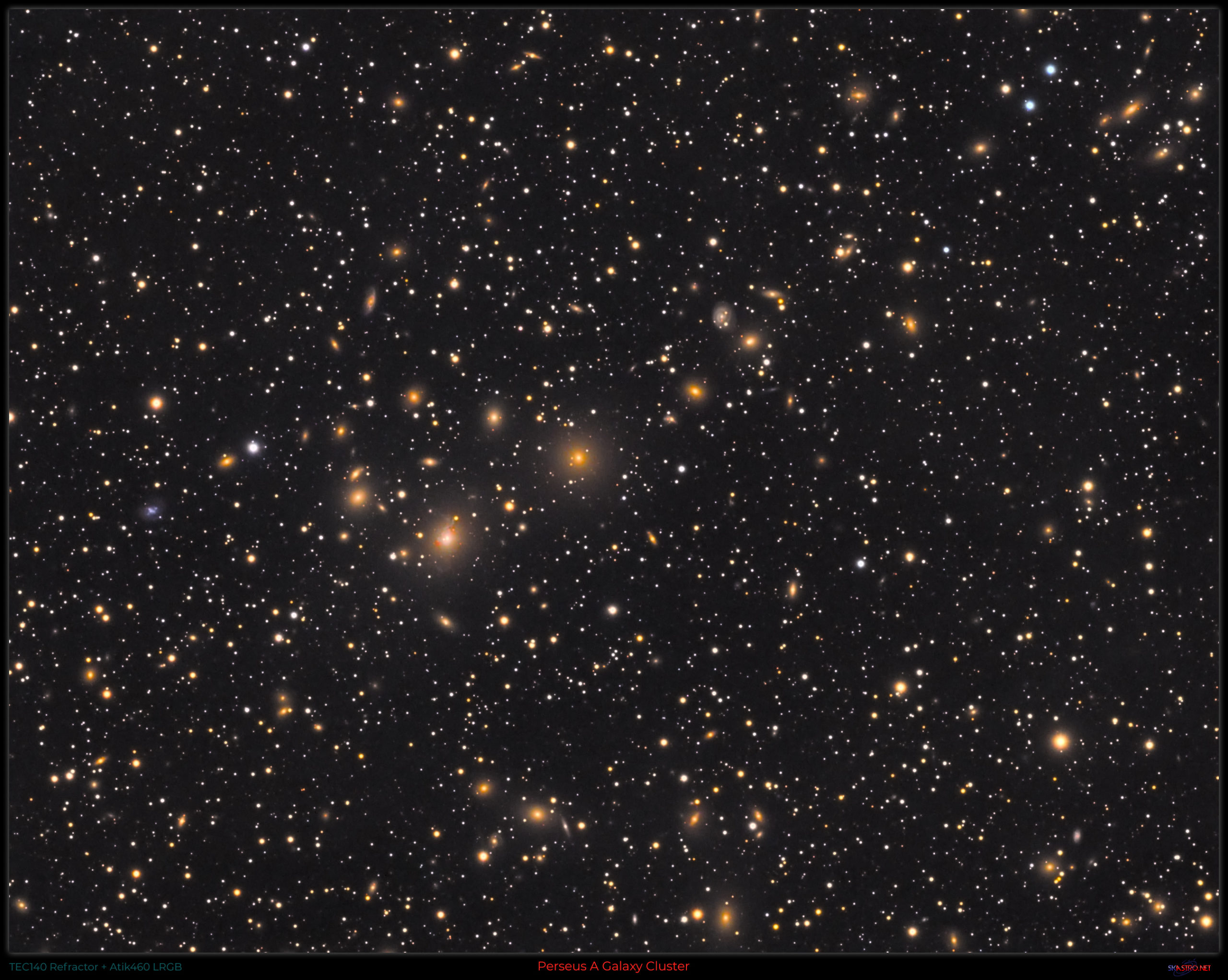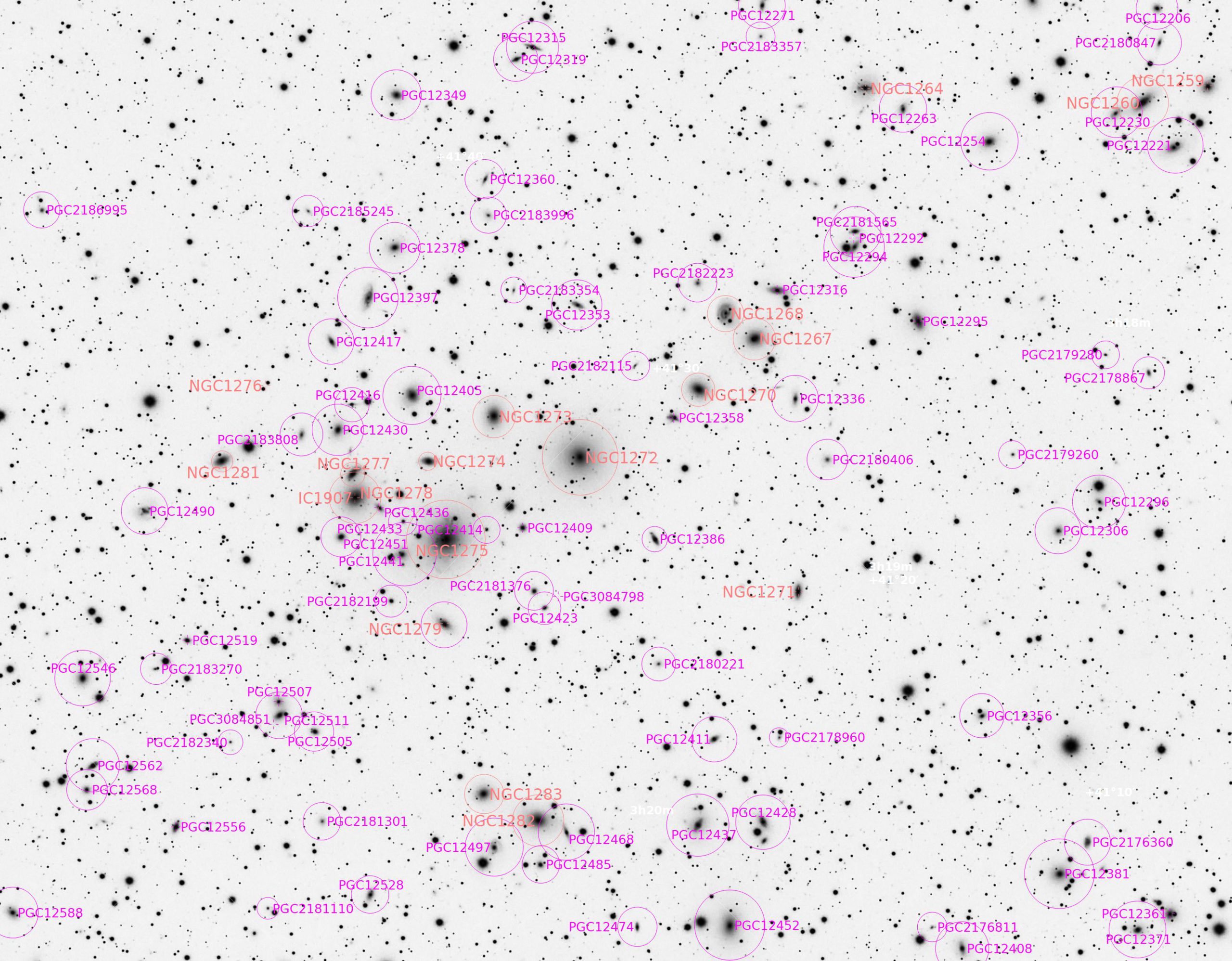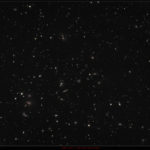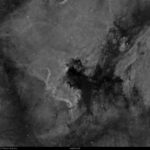The Perseus Galaxy Cluster (Abell 426) is one of the most massive known objects in The Universe. It is a supercluster of galaxies with thousands of individual members located between 230-280 million light years away. The galaxies are located within a vast cloud of enveloping gas, the gas being much more massive than the total mass of the galaxies themselves. This area is very important for physicists testing the theory of relativity.
It is clear from the red patches on the main Perseus galaxy itself (NGC 1275) slightly to left and bottom of this images centre (at the eight o’clock position) that something dramatic is happening inside this galaxy.
Technical Information
Imaged from my backyard observatory in Nottingham, UK with my TEC 140 refractor and Atik 460 CCD camera with Astrodon LRGB filters between October 2019 to January 2020. The image was created from 20 x 900s luminance exposures collected on the 27/28 Oct 2019. The red, green and blue channels were collected between October 2019 and January 2020 over multiple and frustrating imaging sessions due to a very wet winter in the UK with almost total cloud cover for weeks on end. As much data had to be thrown away as is presented here!
Lum > 20 x 900s; Red > 14 x 300s; Green 14 x 300s; Blue 14 x 300s. Everything binned 1×1.
This data set gives a total integration (exposure) time of 8 hours and 30 minutes.
Guiding was with OAG on my MESU 200 mount. Image data acquired with Sequence Generator Pro and developed in PixInsight and PhotoShop CC.
The chart above shows an annotated version of the primary picture. The principle galaxy NGC1275 is shown a third of the way from the left border and just below the centre line. If you then look carefully at the NGC 1275 galaxy in the main image clearly something very significant is taking place inside the galaxy, twisting and distorting it. This galaxy is called Perseus A and is one of the brightest sources of radio and X-rays in the sky.





Comments are closed.